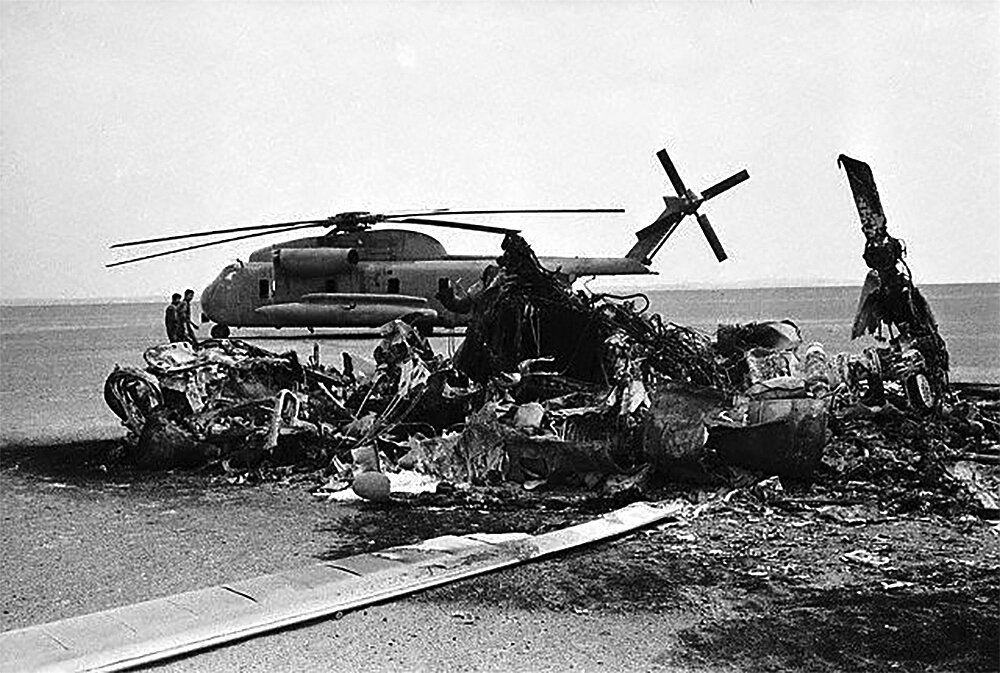Tabas Desert: When angel overcame the eagle claw

TEHRAN – 43 years ago on this day, the US forces conceded a humiliating defeat in Tabas that later affected the country's internal politics.
Iran marks the 43rd anniversary of a failed US military operation in the central Tabas Desert that was launched under the direct order of the US President Jimmy Carter in an attempt to release former US embassy staff held in Tehran after the 1979 Islamic Revolution.
Reasons behind military intervention in Iran
On November 3, the founder of the Islamic Revolution Ayatollah Khomeini delivered a decisive speech and called on Iranian people, students, and the clergies to thwart any US and Zionist regime’s conspiracies against the newly established Islamic Republic of Iran and also to oblige the US government to hand over Shah of Iran, Mohammad Reza Pahlavi, who had gone to New York for a so-called medical treatment.
US interference in Iran's internal affairs, its refusal to hand over the fugitive Shah as well as the meeting of some interim government officials with Zbigniew Brzezinski, the National Security Advisor to President Jimmy Carter (November 1, 1978) flared up Iranian's rage and made them take some retaliatory measures.
On 4 November, 1979, on the first anniversary of the massacre of 56 Iranian pupils by Shah’s troops, and the day on which Imam Khomeini was exiled to Turkey (4 Nov. 1964) by the oppressive Pahlavi regime, almost 400 Iranian Muslim students known as Muslim Students of Imam Khomeini Line stormed the US embassy.
During the takeover of the embassy, documents were discovered that proved some of the American embassy staff had been working with US intelligence agencies; meaning they were spies. Some 52 Americans were held in Tehran for 444 days, but later released unharmed.
On April 25, 1980, the United States launched a covert military operation, known as Operation Eagle Claw, in an attempt to airlift the US embassy staff held in the Iranian capital, Tehran.
Planning and preparation
The plan was to be based on the use of elements from four branches of the U.S. military: Army, Navy, Marines, and Air Force. The concept was based on an operation whereby helicopters and C-130 aircraft, following different routes, would rendezvous on a salt flat (code-named Desert One) 200 miles (320 km) southeast of Tehran. Here the helicopters would refuel from the C-130s and pick up the combat troops who had flown in on the C-130 transports. The helicopters would then transport the troops to a mountain location (Desert Two) closer to Tehran from which the actual rescue raid would be launched into the city the following night. The operation was further to be supported by an in-country CIA team. On completion of the raid, hostages were to be shepherded to a captured Tehran airport from which they were to be flown to Egypt.
Desert One was in South Khorasan Province, in the Dasht-e Lut desert near Tabas (33°04?23?N 55°53?33?E) while Desert Two was located 50 miles (80 km) short of Tehran at 35°14?N 52°09?E.
Nip in the bud
The operation, one of Delta Force's first, encountered many obstacles and failures and was subsequently aborted. Eight helicopters were sent to the first staging area called Desert One, but only five arrived in operational condition. One had encountered hydraulic problems, another was caught in a sand storm, and the third showed signs of a cracked rotor blade.
During the operational planning, it was decided that the mission would be aborted if fewer than six helicopters remained operational upon arrival at the Desert One site, despite only four being absolutely necessary. The field commanders advised US President Carter to abort the mission, which he did.
As the U.S. forces prepared to withdraw from Desert One, one of the remaining helicopters crashed into a transport aircraft that contained both servicemen and jet fuel. The resulting fire destroyed both aircraft and killed eight servicemen.
Angels of God
The founder of the Islamic Revolution Ayatollah Ruhollah Khomeini (RA) in a speech after the incident, condemned Jimmy Carter’s order for military intervention in Iran and said the mission had been stopped by an act of God ("angels of God") who had foiled the U.S. mission.
“Who crushed Mr. Carter's helicopters? We did? The sands did! They were God's agents. Wind is God's agent ... These sands are agents of God. They can try again.”
Political consequences
Carter blamed his loss in the 1980 U.S. presidential election mainly on his failure to secure the release of the hostages. The American hostages were released on 20 January 1981, minutes after Ronald Reagan had taken the oath of office after winning the election against Carter.
Many believe Tabas incident played a major role in Carter’s defeat in the 1980 presidential election in the US.
As a symbol of the failure of US plots against the Islamic Republic, Iran commemorates the event every year in Tabas where government officials, religious leaders and people gather.
Leave a Comment